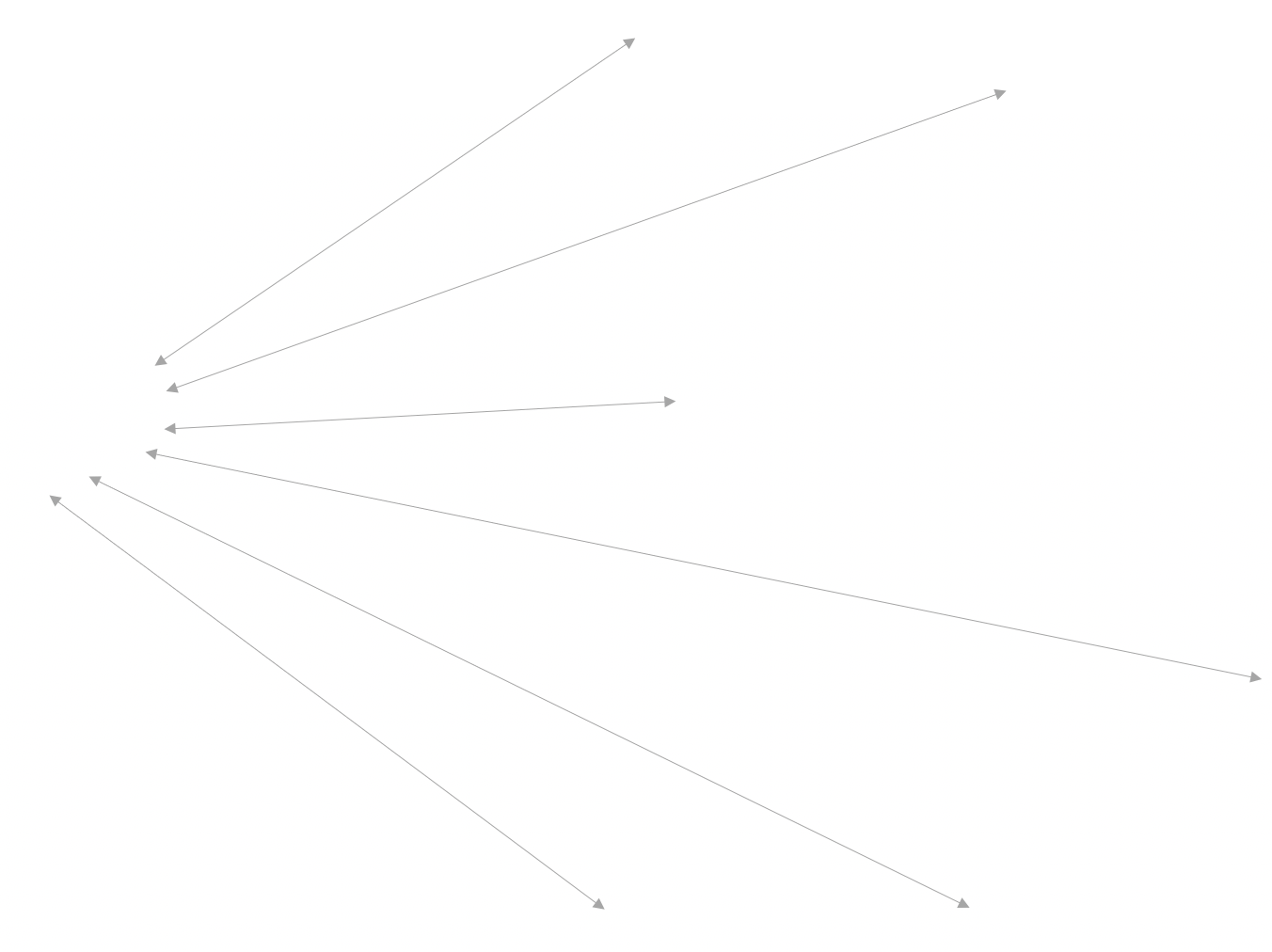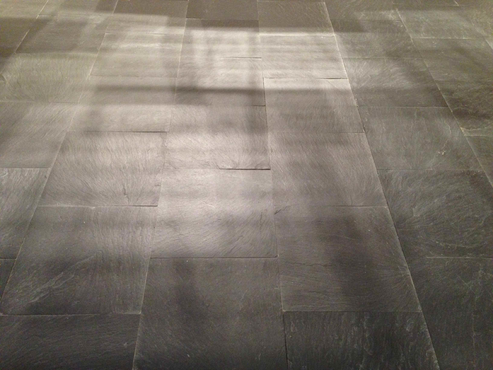Being & Feeling (Alone, Together) was a curatorial project that took place at the Lamont Gallery at Phillips Exeter Academy, in Exeter, NH, US. The initial exhibition was scheduled to run 26 March through 5 May 2020, before the pandemic necessitated a shift in plans.
Choreographic thinking in the curatorial realm prioritizes experimentation, responsiveness, and co-imagination. This way of working was put to the test during the uncertainties of the pandemic.
I envisioned the original project as an arrangement of interlinked components: the exhibition in the gallery, which included animation, painting, sound, installation, and sculpture, and a series of interventions and events. The second iteration of the project, planned for the MUU Gallery in Helsinki, would have included additional installations, performances, and screenings.
Being & Feeling (Alone, Together) addressed how we make our way through the world, full of feeling, as solitary individuals and together with others. The project was designed as an experimental platform to contemplate longing, memory, regret, hope, ambivalence, vulnerability, and delight, individually and in community.
While some of the components for Being and Feeling (Alone, Together) (including the title), were developed before the pandemic, most of the project unfolded in relation to myriad cultural, spatiotemporal, and civic situations the pandemic produced.
Participating artists (click for PDF) in the Lamont Gallery portion of the project included sculptor Sachiko Akiyama, painter Andrew Fish, conceptual artist Lauren Gillette, visual and performing artist Katya Grokhovsky, conceptual artist Stephanie Misa, animator Tobias Rud, sound and installation artist Jon Sakata + Democracy of Sound (exeter), photographer Cheryle St. Onge, and composer Riikka Talvitie.
These artists included both the hyperlocal (e.g., those who were connected to the parent institution and on campus on a daily basis) as well as international artists, included those affiliated with the University of the Arts Helsinki. Other contributors (the list was ongoing) were to have contributed to the many embedded events and interventions, such as “Feeling All Your Feelings” and “Mental States: Psychedelics and Mental Health,” and to the MUU Gallery component of the project.
My focus was on letting things move, a desire animated in part by the writing of Fred Moten and Stefano Harney and Raqs Media Collective. To let things move is to make room for contributors and influences beyond my field of vision.
A series of research conversations contributed to the project’s development and enriched my conception of the choreographic-curatorial. Despite the remote conditions, I recast programs with the help of artists, audiences, and other contributors. The project became a prototype, a site for speculative and collaborative artistic research. Typical ways of working were critiqued and reimagined. I examined—and then abandoned—my assumptions about what I meant by exhibition, participation, and space.
This assemblage of moves and counter-moves, isolation and connection, sought a curatorial mode that did not foreclose what might be initiated outside of my initial idea. I hoped that by inviting people, experiments, and dialogue into the process it would come to resemble a shimmering and expanding constellation, or, at the very least, a disco ball, queering the contours of the curatorial ever-so-slightly.
"...I give the picture away to anyone who will look.
It is an excruciating form of emotional currency."
Cheryle St. Onge, from Calling the Birds Home.
The Lamont Gallery was in the process of installing work and finalizing plans for some of the events in mid-March when the pandemic shut down the gallery (click for a PDF of the memo) and campus. Many installation components were never built. The full scope of the project as imagined could not be realized. The MUU portion of the project was postponed indefinitely. The fate of the events, interventions, and "emergent" components—those created in response to the exhibition’s themes throughout the run of the show—were in question.
The weeks leading up to the shut-down were full of questions and back-and-forth decisions that were made, unmade, and remade.
“We are still planning to open the exhibition in March,” I said.
“Yes, I can change my flight.”
“Do you still want me to mail the last two works?”
“I feel awkward asking, but have you traveled anywhere out of the country?”
“The white mat board we purchased for your drawings is stuck in shipping limbo and won’t get here until April. Can we install the pieces in other frames for now?”
“Should we reschedule for May?”
“All nonessential employees and those who are able to work from home should stay away from campus as much as possible.”
“They are closing the borders and I don’t think I can get there.”
“Students will not be returning to campus at all this spring.”
It went like that for everyone, everywhere.
What next?
How could I put a choreographic-curatorial mindset into practice to address this situation?
During this period, I was taking classes with the Trisha Brown Dance Company. The ongoing practice and consideration of Brown's work, and my involvement in other movement practices, has been a key factor in my curatorial and artistic work.
At first, I associated somatic and dance practice primarily with exhibition layout. However, over time, I began to realize that this practice had a much broader, and more foundational, impact on my curating. It heightened my conceptualization of multidirectional movement and vision. It articulated the continuous navigational swing between interior and exterior architectures. It allowed me to name, and pursue, my interest in long-form, accumulative curatorial gestures. It reinforced the links between drawing, writing, mark making, and movement.
This involvement enabled me to engage with this "What next?" It was a way to approach a problem as a set of situations that invited new ways of interacting.
We were still in the midst of it all. The ideas were still developing, brewing, sparking other plans. Did we have to stop? I was committed to my collaborators and wanted to honor people’s involvement. If the participants were willing, we would embark on an experiment of moving, being, and feeling, alone and together, in a manner that would reveal itself over time.
The closure of campus was an opportunity to rethink how the project would move forward, even if it took a radically different turn.
In my artistic research, I propose that a choreographic curatorial practice prioritizes emergence. Rather than working toward a pre-determined thesis or outcome, the choreographic-curatorial is an aspirational set of moving propositions.
Elements are continuously moving as I develop a project and as participants contribute to it. Artworks and spaces are full of relational possibilities, their movements in response to conditions as well as away from them.
Even "practical" matters are conceived of through movement. I develop an exhibition layout by using the floor plan as a scoring mechanism. I walk, bend, duck, sit, and slide. I traverse the gallery at all hours, inside and outside of the space. Touch is a critical part of this practice: touching materials and touching upon ideas. Alternate ways of being-with.
The pandemic produced a new set of questions: What "moves" in an exhibition project, if not the bodies of artists and audiences and objects? How does conversation move thought and action? What is the promise of speculative or invisible components of a curatorial project?
I used choreographic devices to address these questions—compositional mechanisms or organizing themes—including constellation, conversation, being/feeling/alone/together, restriction, stillness, and letting things go, the visible, the invisible, and gaps.
Performative and responsive elements had been significant aspects of the project concept. Spoken word events, gallery furniture that encouraged different types of bodily engagement, and somatic interventions, among other components, all relied on in-person audiences. But something else occurred: new programs that spoke to the affective impact of the pandemic, the feelings of loss, and the potentially recuperative power of the arts to make connections (addressed in the curatorial statement (click for PDF).
We never used the word “cancelled.” Much of the project did happen, albeit in unanticipated ways. Artists' talks and experiments. Performative intersections with the theme. Trial runs. A 360-degree virtual tour. More experiments. Lots and lots of conversations.
Being & Feeling—and the larger research project—has expanded through the process of assembling this exposition.
This exposition delineates the strategies and impacts of choreographic thinking in curating, rather than just sharing the outcome of what took place in the gallery. The exhibition is still important: it provides a launch.
This Is (click for PDF) makes the case that artistic research can be both the object of research and the means of the research's transmission, a gesture which destabilizes the role of the singular artistic or research outcome.
This exposition includes components could be argued never happened: speculative research. The invisible or unfulfilled elements of the project, when taken in conjunction with what was visible—is where choreographic thinking lies.
For additional public-facing elements of the exhibition, such as imagery, documents, and materials, see the exhibition archive or visit the Lamont Gallery website.
The list below provides a suggested order for the exposition and provides details about the contents:
- Moving Conversations: How walking and talking, moving in the gallery or remotely, physically or mentally, with consulting collaborators and a dramaturg, informed the exhibition
- Letting Things Move: What moves in spite of it all? (artists’ talks, experiments, other responses to the exhibition’s themes
- Things That Never Happened: Hopes, plans, and initiatives that were unrealized due to the pandemic—but which formed important (if invisible) frameworks for the conception of the project
- The Pink Stage: A vast (or small) queering as a catalyst and outlet for longing
- Desiring Constellations: Mapping desires and mining etymologies as artistic research process method
- Curatorial Floorwork: The exhibition catalogue for Being & Feeling (Alone, Together) as somatic practice
- What Propels? Futuring: Perspectives in hindsight and possible futures




















